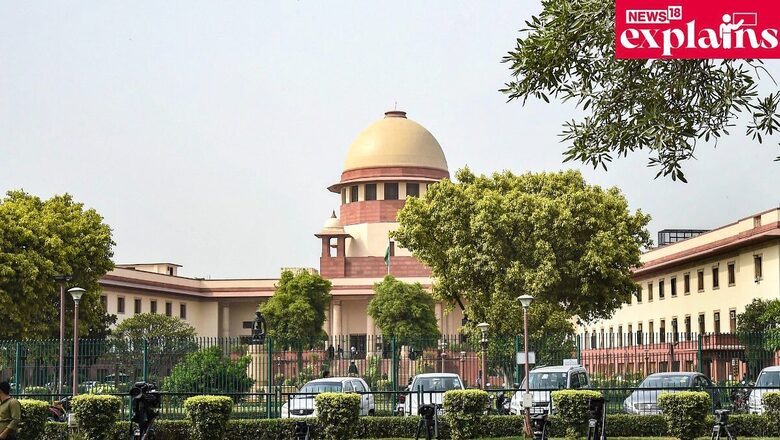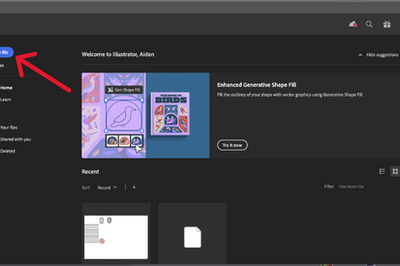
views
Former Chief Justice of India (CJI) Ranjan Gogoi, who is now a nominated member in Rajya Sabha, in his maiden speech in the Parliament on August 7 spoke on the ‘Basic Structure Doctrine’ that was formulated by the Supreme Court in the year 1973 and is considered as “pinnacle of judicial creativity".
Speaking in the upper house Gogoi said, “There is a book by (former Solicitor-General of India) Andhyarujina on the Kesavananda Bharati case. Having read the book, my view is that the doctrine of the basic structure of the Constitution has a debatable, very debatable jurisprudential basis. I would not say anything more than this".
His remarks attracted sharp criticism from the opposition parties, however, Chief Justice of India DY Chandrachud reacting to Gogoi’s comment said that once judges demit office, whatever they say is just opinion and is not binding.
Gogoi’s comments have yet again ignited a historical debate over the ‘Basic Structure Doctrine’ and the finality it provided to the judiciary in terms of interpreting the constitution.
Kesavananda Bharati and Ors v State of Kerala
The judgment was delivered on 24 April 1973, by a bench of the Supreme Court consisting of 13 judges, the largest-ever bench to sit so far, after five long months of regular hearings. The judgment ran into 800 pages and was named the “longest appellate decision" of the last century.
The 13 judges on the bench included Chief Justice SM Sikri, Justices AN Grover, AN Ray, DG Palekar, HR Khanna, JM Shelat, KK Mathew, KS Hegde, MH Beg, P Jaganmohan Reddy, SN Dwivedi, YV Chandrachud and BK Mukherjea.
VIDEO | "The law doesn't appear to be arbitrary. In my respectful submission, the bill is perfectly valid," says Rajya Sabha MP Ranjan Gogoi on the Delhi services bill.(Source: Third Party) pic.twitter.com/CW0PeHOUtY
— Press Trust of India (@PTI_News) August 7, 2023
It also witnessed the engagement of biggest legal luminaries like NA Palkhivala, HM Seervai and Niren De and the fact makes it the most important case of Independent India.
Thirteen judges delivered eleven separate opinions and what came to be called ‘statement’ by nine of them.
Basic Structure Doctrine
The case is considered a unique case in the history of international constitutional law as it formulated the ‘Basic Structure Doctrine’ that gave immense power of judicial review to the Supreme Court.
The supreme court while holding that Parliament is constitutionally empowered to abridge or take away any of the fundamental rights, created a rider. It created a litmus test for any law, even the constitutional amendment passed by the parliament to ascertain its validity. And that litmus is known as the ‘Basic Structure’ Doctrine’.
By formulating the doctrine of basic structure, the apex court could post 24 April 1973, review and strike down any law passed by the parliament, even the constitutional amendment, if found to be violating the basic spirit and ethos of the constitution of India.
In its over 800-page judgment with a thin majority of 7:6, the apex court held that Parliament could amend any part of the Constitution so long as it did not alter or amend “the basic structure or essential features of the Constitution".
What constitutes Basic Structure
Through different cases, the judiciary has created a list of features that constitutes the basic structure. The first major case where the doctrine of basic structure was applied was Indira Nehru Gandhi vs Shri Raj Narain. In this case, the apex court held the 39th Amendment to the Constitution as unconstitutional.
Through this amendment, the election disputes related to the office of prime minister were made immune to judicial review. Since then, hundreds of cases where the supreme court has struck down a law or constitutional amendments as it violated the basic structure of the Constitution.
M Laxmikantha in his book Indian Polity provides an elaborate list of cases and the basic features that emanate from them.
Kesavananda Bharati case (1973)
- Supremacy of the Constitution
- Separation of powers between the legislature, the executive and the judiciary
- Republic and democratic form of government
- Secular character of the constitution
- Federal character of the constitution
- Sovereignty and unity of India
- Freedom and dignity of the individual
- Mandate to build a welfare state
- Parliamentary System
Indira Nehru Gandhi case (1975)
- India as a sovereign democratic republic
- Equality of status and opportunity of an individual
- Secularism and freedom of conscience and religion
- Government of laws and not of men (i.e., Rule of Law)
- Judicial review
- Free and fair elections which is implied in democracy
Minerva Mills case (1980)
– Limited power of Parliament to amend the constitution
– Judicial review
– Harmony and balance between fundamental rights and directive principles
Central Coal Fields Ltd case (1980)
– Effective access to justice
Bhim Singhji Case (1981)
– Welfare State (Socio-economic justice)
SP Sampath Kumar Case
– Rule of law (1987)
– Judicial review
P Sambamurthy Case
– Rule of law (1987)
– Judicial review
Delhi Judicial Service Powers of the Supreme Association Case (1991)
– Powers of the Court under Articles 32, 136, 141 and 142
Indra Sawhney Case (popularly known as the Mandal Case (1992)
– Rule of law
Kumar Padma Prasad Case (1992)
– Independence of Judiciary
Kihoto Hollohon Case (1993) (popularly known as the Defection Case)
– Free and fair elections
– Sovereign, democratic, republican structure
Raghunath Rao Case (1993)
– Principle of equality
– Unity and integrity of India
SR Bommai Case (1994)
- Federalism
- Secularism
- Democracy
- Unity and integrity of the nation
- Social justice
- Judicial review
L Chandra Kumar Case
– Powers of the High Courts (1997) under Articles 226 and 227
Indra Sawhney II Case
– Principle of equality (2000)
All India Judge’s Association Case (2002)
– Independent judicial system
Kuldip Nayar Case (2006)
– Democracy
– Free and fair elections
M. Nagaraj Case (2006)
– Principle of equality
IR Coelho Case (2007) (popularly known as IX Schedule Case)
– Rule of law
– Separation of powers
– Principles (or essence) underlying fundamental rights
– Judicial review
– Principle of equality
Ram Jethmalani Case (2011)
– Powers of the Supreme Court under Article 32
Namit Sharma Case (2013)
– Freedom and Dignity of the Individual
Madras Bar Association Case (2014)
– Judicial review Case
– Powers of the High Courts under Articles 226 and 227



















Comments
0 comment